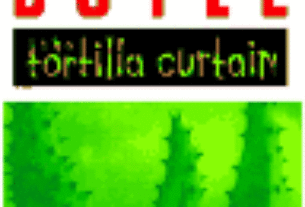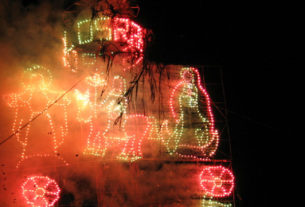TLATELOLCO MASSACRE:
DECLASSIFIED U.S. DOCUMENTS ON MEXICO
AND THE EVENTS OF 1968
Mexico’s tragedy unfolded on the night of October 2, 1968, when a student demonstration ended in a storm of bullets in La Plaza de las Tres Culturas at Tlatelolco, Mexico City. The extent of the violence stunned the country. When the shooting stopped, hundreds of people lay dead or wounded, as Army and police forces seized surviving protesters and dragged them away. Although months of nation-wide student strikes had prompted an increasingly hard-line response from the Diaz Ordaz regime, no one was prepared for the bloodbath that Tlatelolco became. More shocking still was the cover-up that kicked in as soon as the smoke cleared. Eye-witnesses to the killings pointed to the President’s “security” forces, who entered the plaza bristling with weapons, backed by armored vehicles. But the government pointed back, claiming that extremists and Communist agitators had initiated the violence. Who was responsible for Tlatelolco? The Mexican people have been demanding an answer ever since.
Thirty years later, the Tlatelolco massacre has grown large in Mexican memory, and lingers still. It is Mexico’s Tiananmen Square, Mexico’s Kent State: when the pact between the government and the people began to come apart and Mexico’s extended political crisis began.
To commemorate this thirtieth anniversary, the National Security Archive has assembled a collection of some of our most interesting and richly-detailed documents about Tlatelolco, many recently released in response to the Archive’s Freedom of Information Act requests, all obtained from the secret archives of the CIA, FBI, Defense Department, the embassy in Mexico City and the White House. The records provide a vivid glimpse inside U.S. perceptions of Mexico at the time, and discuss in frank terms many of the most sensitive aspects of the Tlatelolco massacre which continue to be debated today: the political goals of the protesting students, the extent of Communist influence, Diaz Ordaz’s response, and the role of the Mexican military in helping to crush the demonstrations.
But while the declassified U.S. documents reveal new details about Tlatelolco, perhaps most important is the challenge their release poses to Mexico today. Thirty years after the massacre, the Mexican government continues to deny its people basic facts about what happened — refusing to open Army and police records to public scrutiny on the grounds of “national security,” denying Congress the right to hear testimony by agents of the state who were present at Tlatelolco. The valiant investigative efforts by reporters, scholars, historians, and an official congressional committee have helped clarify the events of 1968 enormously. But Mexico’s secret archives are also critical for a full understanding of Tlatelolco — and until they are opened, doubts about the truth of the Tlatelolco massacre will linger on.
Kate Doyle , Analyst, directs the Guatemala and Mexico Documentation Projects for the National Security Archive. For the past seven years, Doyle has served as a foreign policy analyst in charge of Archive projects on Central America, the “drug war” in the Americas, “low-intensity conflict” and other aspects of U.S. policy in Latin America. She supervises the Archive’s ongoing collaborative effort with the Historical Clarification Commission of Guatemala, and assists on the Freedom of Information Act lawsuits against the U.S. government brought by the Archive and others on behalf of Jennifer Harbury and Carol DeVine. She was project editor for the Archive’s document publication, El Salvador: War, Peace and Human Rights, 1980-1994, and co-authored the 1994 report of the Washington Task Force on Salvadoran Death Squads. Doyle received her BA from Brown University in 1984 and her MA from Columbia’s School of International and Public Policy, where she was an Alice Stetton Fellow. Her articles have appeared in The Boston Globe, World Policy Journal, Current History and The Nation among other publications.



